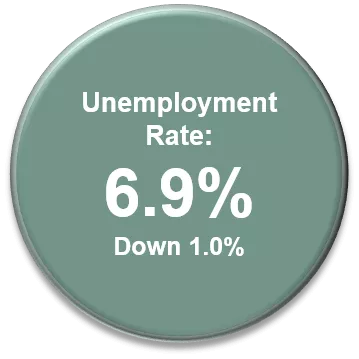November Economic Commentary: Metrics Improve Even as Outlook Remains Cloudy

Chief Economist
Pohlad Companies
Now that the election is over, understanding the current state of the economy coupled with developments in addressing the COVID-19 virus will likely take top priority. Despite the economic progress that has been made since April, the overall loss in economic activity since February remains substantial. Although we see improvement in a number of economic metrics, the rate of improvement is slowing. We are in the midst of another wave of the virus. Pandemic fatigue is setting in as we enter what is likely to be a challenging winter. The strength and sustainability of the recovery going into 2021, therefore, remains an open question as the spike in COVID-19 infections and stimulus gridlock cloud the outlook.
GDP
As expected, third-quarter GDP staged a record comeback after the record quarterly decline in Q2. On an annualized basis, Q3 real GDP advanced at a 33.1% rate. Despite the strong recovery, GDP is still 3.5% below the pre-COVID peak—implying that it will be at least until the second half of 2021 before the COVID decline will be recovered. Dissecting the report, it is clear that the economy, while slowly recovering, is a bifurcated affair with housing, autos, and technology showing strong growth at the same time that airlines, energy, and hospitality remain weak.
A new wave of the virus in the U.S. started in October, and we are beginning to see the impact on a number of the weaker sectors. Thankfully, mortality rates have not increased in line with the number of new reported cases.

Employment
The most recent employment report released last Friday showed that non-farm payrolls increased by 638,000 in October. That number is actually stronger than it looks because it included a 147,000 drop in temporary Census workers. With the unemployment rate falling to 6.9% from 7.9%, it suggests better momentum in the labor market than previously thought. Still, payrolls remain 10.1 million below the February peak. While the trend is moving in the right direction, the rate of improvement continues to slow and suggests that it will be well into 2022 before employment is back to pre-COVID levels.
If we look at the total number of people claiming unemployment benefits, we can see the continued impact on the labor force. Since state unemployment benefits expire after 26 weeks, unemployed people may utilize the Pandemic Emergency Unemployment Compensation (PEUC) program for another 13 weeks of benefits. If we total these two groups of unemployment claimants, we see that 22 million people are now receiving some form of unemployment benefits after peaking at 32 million in April. For perspective, this metric peaked at nearly 12 million during the Great Financial Crisis.
Many hurdles remain in the job market as aid to small and large businesses runs down. The sectors of the economy that were most impacted by the virus are unlikely to find much improvement in business conditions as the weather cools and people are more likely to stay home rather than venture into indoor spaces.
Personal Income Growth
Personal balance sheets appear to be in decent shape due to the fiscal assistance provided at the outset of the crisis. Savings are up, consumer credit is being paid down—in fact, consumer credit card borrowing shrank by more than 10% over the six months through September. Unfortunately, personal income growth is expected to slow as additional fiscal support is not forthcoming and improvement in the labor market is slowing. The strong consumer spending that supported the Q3 GDP number will likely slow as income growth slows.
As stated many times, full economic recovery will not be possible until the threat of the virus is resolved. The pandemic will cap economic growth going forward, especially if case counts continue to accelerate during the winter months. The delay in the next round of fiscal support exacerbates the slowdown.
Insights
Research to help you make knowledgeable investment decisions